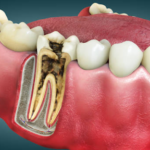Understanding Acne Scars
Before diving into the treatments, it’s essential to understand the different types of acne scars. Acne scars form when the skin’s healing process after a breakout isn’t flawless. The skin tissue either overproduces collagen (leading to raised scars) or doesn’t produce enough collagen (leading to depressions or indentations). The most common types of acne scars include icepick scars, boxcar scars, rolling scars, and hypertrophic scars. Each type requires a different treatment approach to effectively improve the skin’s texture and appearance.

The Role of Laser Treatments in Acne Scar Removal
Laser treatments have revolutionized the way acne scars are treated. These advanced procedures work by stimulating the skin’s natural healing process, promoting collagen production, and improving skin texture. The heat and light energy emitted by the lasers target the deeper layers of the skin, breaking down scar tissue and encouraging the growth of new, healthy skin. This leads to smoother skin with less noticeable scarring over time.
Fractional CO2 Laser
One of the most popular and effective laser treatments for acne scars is fractional CO2 laser therapy. This treatment works by creating tiny columns of thermal damage in the skin’s deeper layers. These columns stimulate the body’s natural healing response, which promotes collagen production and encourages the skin to regenerate. The result is a smoother, more even skin surface. Fractional CO2 laser treatment is ideal for those with moderate to severe acne scars and can help reduce the depth and visibility of scars significantly.
Erbium YAG Laser
The Erbium YAG laser is another advanced option for treating acne scars. This laser is particularly effective for treating superficial scars and is less aggressive compared to the fractional CO2 laser. It targets the skin’s outer layers and removes damaged tissue without affecting the deeper layers. This treatment is ideal for individuals with mild acne scarring or those who are looking for a less invasive option with minimal downtime. The Erbium YAG laser helps to resurface the skin and improve texture and tone.
Pulsed Dye Laser (PDL)
For individuals with acne scars that involve redness or pigmentation, the Pulsed Dye Laser (PDL) is an excellent option. PDL works by emitting a focused beam of light that targets the blood vessels beneath the skin, reducing redness and improving skin color. This laser treatment is particularly effective for treating acne scars that have a reddish or purple appearance, often seen in cases where the acne was inflamed. Over time, PDL helps to improve the overall complexion, making acne scars less noticeable.
Fractional Non-Ablative Laser
Fractional non-ablative lasers are another option for acne scar treatment. These lasers work by penetrating the skin without causing any visible damage to the outer layers. Unlike ablative lasers, which remove the outer layers of skin, fractional non-ablative lasers stimulate the skin’s deeper layers to promote healing and collagen production. These treatments are ideal for those who want to improve their skin without the downtime associated with more invasive procedures. Fractional non-ablative lasers can help reduce the appearance of mild to moderate acne scars and improve skin texture and tone.
Benefits of Advanced Laser Treatments for Acne Scars
Long-Lasting Results
One of the primary advantages of advanced laser treatments is their ability to provide long-lasting results. Unlike topical treatments that only address the surface of the skin, lasers target the deeper layers of the skin, where the scars are formed. By stimulating collagen production and promoting skin regeneration, lasers can help achieve more permanent results. While multiple sessions may be required for optimal results, the improvements in skin texture and tone can last for months or even years.
Minimal Downtime
Compared to more invasive surgical options, laser treatments for acne scars typically involve minimal downtime. Depending on the type of laser used, you may experience mild redness, swelling, or peeling, but these side effects usually subside within a few days to a week. This makes laser treatments a convenient option for individuals who want to improve their skin without taking extended time off from work or social activities.
Customizable Treatments
One of the standout benefits of laser therapy is its versatility. There are different types of lasers that can be used depending on the type and severity of the acne scars. Whether you have deep, indented scars or superficial pigmentation, there’s a laser treatment that can be tailored to address your specific needs. A personalized treatment plan ensures that you receive the most effective care for your unique skin type and acne scar concerns.
Non-Invasive Solution
Laser treatments for acne scars are non-invasive procedures, meaning they don’t require incisions or stitches. This is a significant advantage over surgical options, as it minimizes the risk of complications and reduces the recovery time. For those who want to avoid invasive procedures but still achieve noticeable improvements, laser therapy provides an excellent alternative.
Preparing for Laser Acne Scar Treatment
Before undergoing laser treatment, it’s essential to have a consultation with a skincare professional to assess your skin’s condition and determine the best course of action. During this consultation, the professional will examine your acne scars, discuss your goals, and recommend the most suitable laser treatment. It’s also important to follow any pre-treatment instructions, such as avoiding sun exposure or discontinuing certain skincare products, to ensure the best results.
Aftercare and Maintenance
After laser treatment, your skin may be sensitive, so it’s crucial to follow the aftercare guidelines provided by your skincare professional. These may include moisturizing your skin, avoiding direct sun exposure, and using gentle skincare products to support healing. Depending on the type of laser treatment, you may need to schedule follow-up sessions to achieve optimal results.
Conclusion
Advanced laser treatments for acne scars in Abu Dhabi provide an effective and non-invasive solution for individuals looking to improve their skin’s appearance. Whether you’re dealing with deep scars or superficial pigmentation, there’s a laser treatment that can help reduce the visibility of acne scars and restore your skin’s natural beauty. With the ability to deliver long-lasting results with minimal downtime, laser therapy is a popular choice for those seeking smooth, clear skin.
Frequently Asked Questions (FAQs)
1. How many laser treatments are needed for acne scars?
The number of treatments required depends on the type and severity of your acne scars. Typically, patients undergo multiple sessions, spaced a few weeks apart, to achieve optimal results. Your skincare professional will create a treatment plan based on your individual needs.
2. Is there any downtime after laser treatment for acne scars?
While the downtime is minimal, you may experience some redness, swelling, or peeling after the procedure. These side effects typically subside within a few days, allowing you to resume normal activities fairly quickly.
3. Are laser treatments for acne scars painful?
Most patients report minimal discomfort during laser treatments. A topical numbing cream is often applied to the treated area to ensure your comfort. Some individuals may experience mild tingling or heat during the procedure.
4. How long does it take to see results from laser treatments?
You may begin to notice improvements in your skin’s texture and tone within a few weeks of the first session. However, optimal results are usually achieved after several treatments.
5. Are laser treatments suitable for all skin types?
Laser treatments can be effective for most skin types, but your skincare professional will assess your individual skin condition and recommend the most appropriate treatment. Some lasers are better suited for specific skin tones, so it’s essential to work with an experienced provider.



